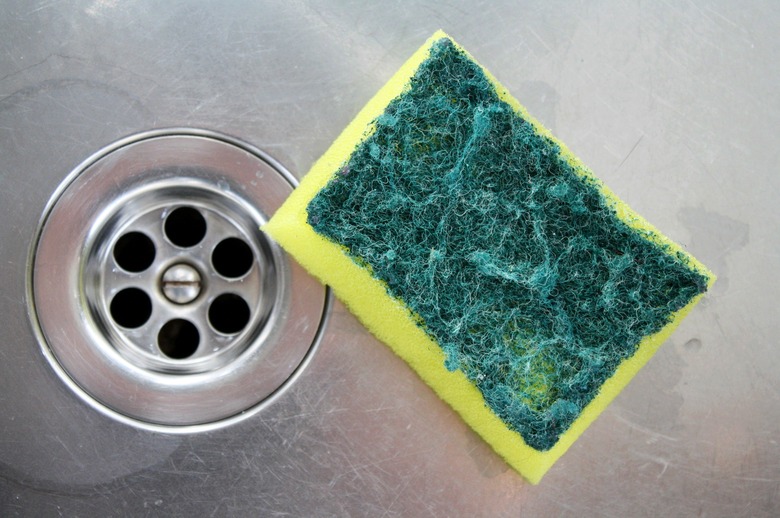Will Clorox Clear A Drain?
Virtually every household has a bottle of Clorox bleach sitting on a shelf somewhere, often in the laundry room. It's usually there for one of two purposes, either to whiten dirty laundry or to make a disinfecting cleaner. Because Clorox is such a good disinfectant, people with pools usually have one or several bottles on hand to shock the pool water when it starts to turn cloudy.
If you keep a bottle of bleach on hand for disinfecting purposes, you might think it's a good idea to use the Clorox to unclog drains. It won't work, and there are good reasons to not use it for this purpose, particularly if the drain is in a stainless steel sink. You can make a much more effective drain cleaner using other chemicals that are just as common around the house as bleach.
Bleach Can Corrode Metal, Especially Stainless Steel
Bleach Can Corrode Metal, Especially Stainless Steel
Clorox is sometimes referred to as chlorine bleach, but the main ingredient isn't free chlorine but a chemical compound known as sodium hypochlorite, which breaks down to release chlorine when it's diluted. Although Clorox is actually a 5 percent solution of sodium hypochlorite and water, using it does expose whatever surface you pour it on to chlorine, and that's disastrous for stainless steel.
Chlorine is one of the few chemicals that can permanently damage stainless steel. It does this through an electrochemical corrosion process that results in pitting, which can turn the sink permanently dull at best and cause pinhole leaks at worst. This probably won't happen the first time you pour bleach into a stainless steel sink, but it will if you do it repeatedly.
The chlorine in bleach can also damage other metals, so if the pipes under your sink are chrome, they're vulnerable. Pouring bleach through them seldom does any damage, but you don't want it to sit in the pipes trying to work its way through a clog.
Bleach Disinfects Drains, But It Doesn't Clear Clogs
Bleach Disinfects Drains, But It Doesn't Clear Clogs
You're probably going to be unsuccessful if you use bleach to clear a clogged drain. Like sodium hydroxide, the main ingredient in Drano, sodium hypochlorite is alkaline but isn't as caustic and won't eat its way through solid matter in the drain. Few plumbers recommend Clorox to unclog drains, but that doesn't mean there's no benefit to using it.
What bleach is good at doing is disinfecting, so a regular treatment can help prevent organic matter from growing in the pipes, and that helps prevent clogs. A regular treatment also helps keep the pipes smelling fresh. Just remember that repeated use of bleach will corrode stainless steel drain covers, garbage disposal flanges and sinks.
Bleach Can Be Part of an Effective Drain Maintenance Treatment
Bleach Can Be Part of an Effective Drain Maintenance Treatment
The best way to clear a clogged drain is to use a plunger. If that doesn't work, and you want to use chemicals, the remedy many plumbers recommend is baking soda and vinegar. Pour about 1/2 cup of baking soda down the drain and follow this with a 50/50 solution of vinegar and water — preferably boiling water. The combination creates a foam of carbon dioxide bubbles that loosens the clog so you can plunge or wash it away.
It's best if clogs don't develop in the first place, and a regular disinfecting treatment can help. Whether you use bleach or vinegar for drains — and both are good disinfectants — depends on the presence of stainless steel. Vinegar is also a good disinfectant, and it won't cause any corrosion.
If you choose bleach, dilute it with 10 parts water. Rather than making it weaker, dilution actually makes bleach a stronger disinfectant.
